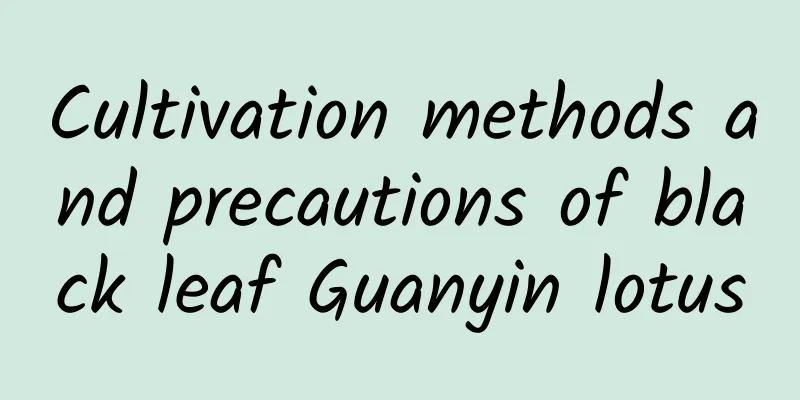Water chestnut cultivation methods and precautions

1. Maintenance methods1. Soil: Water chestnuts do not have very high requirements for soil and can grow well in most soils. The soil can be prepared by mixing garden soil and a small amount of fine sand. Note that the soil should not be too sticky, which will affect the taste of the bulb. 2. Light: It needs to grow in a place with good lighting to meet the growth needs of the bulb. You can usually place it in a place with good lighting conditions such as a balcony to avoid long periods of time without sunlight. 3. Temperature: A warm environment is more suitable for its growth. The normal breeding temperature can be kept at around 20℃. It is very afraid of cold. Try to move it indoors for maintenance in winter and pay attention to cold prevention. 4. Water: It likes a humid growing environment, and many of them are planted in paddy fields or ponds, so try to provide it with sufficient water during breeding, especially in the hot summer weather, to ensure that it has sufficient water. 2. Breeding techniques1. Reproduction: Water chestnuts are generally propagated by their bulbs. Select bulbs of good quality and weighing more than 15 grams, soak them in carbendazim for sterilization, and then germinate them indoors, after which they can be sown. 2. Germination: Germination is usually done indoors. Spread 10 cm of straw, arrange the water chestnut buds on it facing upwards, spread another layer of straw on top, put the water chestnuts on it, repeat three or four layers, wet it with water every day, keep it moist, and when the buds grow to about 4 cm, they can be planted. 3. Problem diagnosis and treatment1. Disease: Stem rot is the most harmful to it. This disease is more likely to occur in hot and humid weather, and the speed of onset is very fast. If it is discovered late, the whole bead is beyond saving. In the early stage, you can spray it with 500-1000 times of 50% carbendazim. 2. Pests: Common ones are borers, grasshoppers, etc. Pests do not cause much harm to it. Just catch and kill them in time when you find them, or use omethoate for prevention and control. IV. Other issues1. Can it be eaten: Water chestnuts are edible and can be cooked with many ingredients, but please note that it is a cold food and women during menstruation should not eat it. 2. Is it poisonous? Water chestnuts are non-toxic, and their bulbs are edible. They taste very good after being cooked, so they can be safely cultivated and eaten. |
<<: Brussels sprouts cultivation methods and precautions
>>: Cultivation methods and precautions of the string money vine
Recommend
How often should I water Schefflera
How often should I water Schefflera Schefflera is...
What is the best season to plant chrysanthemums? What is the best month to transplant chrysanthemums?
Chrysanthemum planting requires the use of soil w...
When do gladiolus bloom?
Gladiolus Flowering Period It takes 60-120 days f...
The twelve zodiac signs have their own unique flowers. Which flower are you?
1. Aries Flower represented: Hibiscus Lucky flowe...
Are lilies shade-loving or sun-loving plants?
Do lilies prefer shade or sun? Lily is a sun-lovi...
What does Champagne Rose represent?
1. What does it represent? 1. Champagne rose also...
How to propagate Michelia scabra
Cuttings Time of choice This method of reproducti...
The difference between Photinia fraseri and Photinia fraseri
1. Differences in tree shape Photinia fraseri is ...
How to cut leaves of white phoenix
Prepare the Materials The materials needed for le...
"Three-bath" cultivation method, give your orchid a bath
Orchid Bath Bathing means giving the orchid a bat...
Chlorophytum cultivation methods and precautions
1. Soil Chlorophytum does not have high requireme...
How to prune succulents
When to prune succulents Succulent plants do not ...
Cultivation methods and precautions of Areca palm
1. Soil The culture soil must be well-drained, an...
Throw a few small things into the "Green Ivy" pot, and the big white roots will grow strong and the green branches will grow tall!
What are the benefits of using willow bark to car...
How to grow Zephyranthes in winter, so it can survive the winter without any problems!
illumination Zephyranthes is a flower that likes ...









